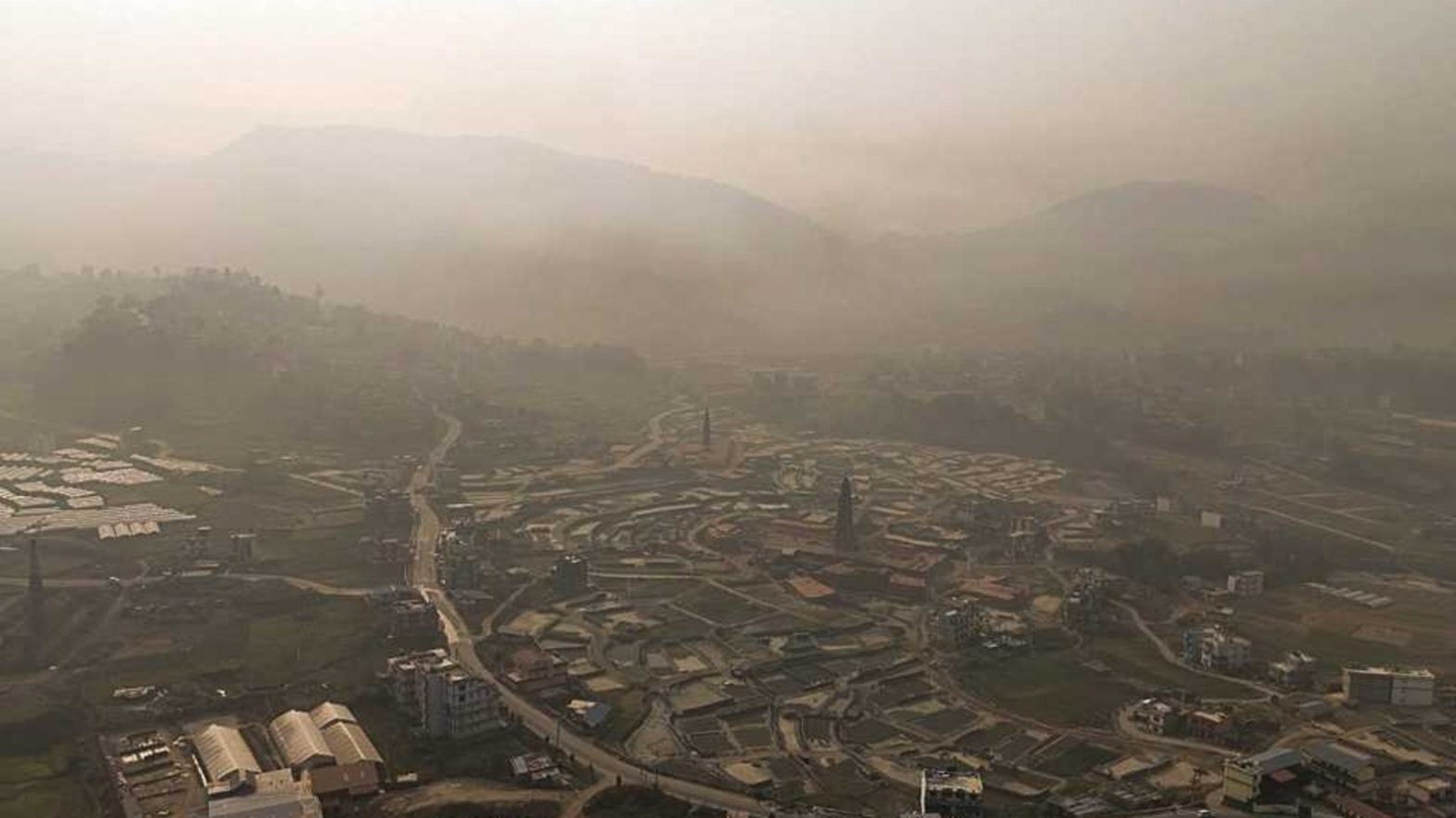
Kathmandu: The skyline of Kathmandu is currently engulfed in a thick layer of pollution that has persisted for weeks, greatly affecting visibility and causing flight delays. Residents are experiencing health issues such as itchy eyes, sore throats, and burning sensations in their noses due to the pervasive grey haze.
“I recently recovered from a bad cold, and I was bedridden for two to three days due to its severity. My eyes felt itchy and twitchy, and I’ve noticed a lot of dust on my face after washing it,” said Samikshya Sunuwar, a graduate student, as she walked around Kathmandu Durbar Square with friends.
According to the Department of Environment’s air quality monitoring, the daily average readings for Particulate Matter (PM) are alarming: PM 2.5 levels stand at 135.661 µg/m³, PM 10 at 267.839 µg/m³, and total suspended particulates at 482.055 µg/m³. These figures significantly exceed the World Health Organization’s annual average safe limit of 5 µg/m³ for PM2.5 and the guideline that 24-hour averages should not exceed 15 µg/m³ more than 3 to 4 days a year.
PM2.5 consists of tiny particulate matter that can penetrate deep into the lungs and even enter the bloodstream. The Environmental Protection Agency categorizes air quality readings of 151-200 as unhealthy, with serious effects for sensitive groups, while levels exceeding 300 are deemed hazardous to health.
“Recently, I’ve been experiencing severe headaches, likely due to the redness and itchiness in my eyes. These symptoms have affected my ability to focus on assignments and lectures,” shared another student, Suniva Hada.
In the past week, Kathmandu’s air quality has fluctuated between very unhealthy and hazardous levels. Morning and late evening air quality remains hazardous, with daytime levels still classified as very unhealthy due to thick pollution blocking sunlight.
The deteriorating air quality has led to a surge in respiratory cases at major hospitals in the valley. Kaliprasad Osiyara, an Information Officer at the Tribhuvan University Teaching Hospital (TUTH), reported a significant increase in patient visits, particularly for respiratory issues.
“In the last week, we have seen a tremendous inflow of patients, particularly children suffering from viral fevers, coughs, and other ENT-related issues. Our outpatient departments (OPD) are overwhelmed, with numbers exceeding capacity,” Osiyara noted. Emergency room admissions for respiratory issues have also risen, straining hospital resources.
Dr. Niraj Bam, Head of the Pulmonology Department at TUTH, indicated that the continuous haze has severely affected healthcare capacity, resulting in the referral of patients to other hospitals. He observed a sharp increase in patients with chronic conditions like asthma and tuberculosis, all exacerbated by the pollution.
Various hospitals, including Bir Hospital and Kanti Children’s Hospital, have reported similar spikes in pollution-related health issues, with some witnessing patient inflow double recent normal levels.
Kathmandu, with an area of 413.69 square kilometers, has become a hotspot for air pollution over the last decade, predominantly due to industrial emissions, vehicle exhaust, and the burning of waste. A recent random test indicated that 193 out of 261 public transport vehicles in the capital failed emissions tests. Despite a government ban on vehicles older than 20 years, compliance has been insufficient.
The rise in air pollution levels has correlated with increased cases of lung cancer and other serious health conditions. Dr. Bam noted that the environmental factors have caused lung cancer in individuals who have never smoked, reflecting the grave public health risks associated with pollution. The air quality crisis has also led to a significant economic burden due to lost productivity and increased healthcare costs.
The International Centre for Integrated Mountain Development (ICIMOD) recently reported that air pollution contributes to 42,000 deaths annually in Nepal, affecting disproportionately more children and the elderly. The organization attributes some of the pollution spike to pre-monsoon forest fires in Nepal.
Amid this mounting crisis, the lack of comprehensive health impact assessments hampers efforts to address the severe and growing public health threat posed by air pollution in Kathmandu.
